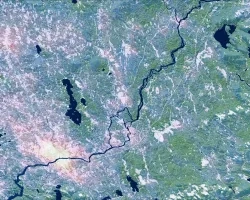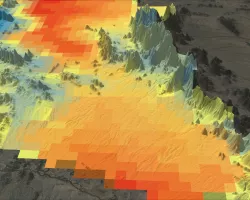Wichita Climate (Summer 2022)
Team: Brooke Laird (Project Lead), Melissa Ashbaugh, Muskaan Khemani, Sadie Murray
Summary: Wichita, Kansas is facing a host of climate threats, one being extreme heat that is manifested through the urban heat island (UHI) effect. The uneven distribution of heat risk in Wichita across socioeconomic status is an environmental justice issue. We worked with the City of Wichita to map heat exposure, tree canopy, and heat risk in order to support the City's climate resilience initiatives. To visualize heat exposure, we quantified and mapped average summer heat from 2013–2021 using Landsat 8 Operational Land Imager (OLI) and Thermal Infrared Sensor (TIRS) Land Surface Temperature (LST) and Aqua Moderate Resolution Imaging Spectroradiometer (MODIS) night-time LST. To understand tree canopy cover gaps, we created a tree canopy map using 2021 PlanetScope imagery, which identified 20% more trees than the US Geological Survey’s (USGS) National Land Cover Database (NLCD) tree canopy coverage estimates for Wichita. To characterize high risk areas, we used socioeconomic census data and existing social vulnerability indices, highlighting populations that were exposed and vulnerable to extreme heat. The spatial analyses demonstrated that heat exposure is concentrated in the city center and southwest Wichita, areas that are also low in tree canopy coverage. The three census block groups and 17 census tracts with the highest heat risk primarily circle the city center, in areas home to more socially vulnerable populations and near enough to the dense urban center to feel significant urban heat island effects.



